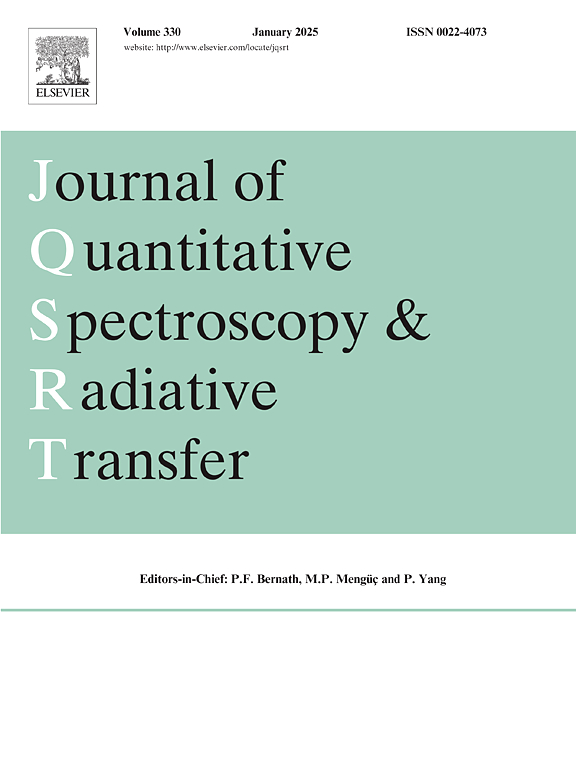Accelerating radiative transfer calculations in the thermal infrared through principal component analysis of inherent optical properties
IF 2.3
3区 物理与天体物理
Q2 OPTICS
Journal of Quantitative Spectroscopy & Radiative Transfer
Pub Date : 2025-03-03
DOI:10.1016/j.jqsrt.2025.109415
引用次数: 0
Abstract
Principal component analysis (PCA) is a linear mathematical transformation that reduces data dimensionality and enables easy identification of data variability; PCA converts a correlated mean-subtracted data set into a series of principal components (PCs). PCA can be performed on inherent optical properties to enhance the computational efficiency of radiative transfer calculations. Prior work has demonstrated the efficacy of this technique for the computation of radiances and Jacobians in the solar scattering regime, and for estimating broadband fluxes. Here, we extend the methodology to the thermal emission regime. We perform simulations for a nominal (model-based) aerosol scattering scenario, and for a scenario with enhanced aerosol scattering that is representative of strong pollution. The PCA-based approach provides top-of-the-atmosphere radiance results that are typically within 0.1% of numerically exact computations, while enabling a three-orders-of-magnitude speedup. We also investigate the accuracy levels achieved using variable numbers of PCs for different gas absorption optical depth regimes. Results show that more PCs are required for optical depths close to unity, while low and high optical depth scenarios can be simulated accurately with only one PC.
求助全文
约1分钟内获得全文
求助全文
来源期刊
CiteScore
5.30
自引率
21.70%
发文量
273
审稿时长
58 days
期刊介绍:
Papers with the following subject areas are suitable for publication in the Journal of Quantitative Spectroscopy and Radiative Transfer:
- Theoretical and experimental aspects of the spectra of atoms, molecules, ions, and plasmas.
- Spectral lineshape studies including models and computational algorithms.
- Atmospheric spectroscopy.
- Theoretical and experimental aspects of light scattering.
- Application of light scattering in particle characterization and remote sensing.
- Application of light scattering in biological sciences and medicine.
- Radiative transfer in absorbing, emitting, and scattering media.
- Radiative transfer in stochastic media.

 求助内容:
求助内容: 应助结果提醒方式:
应助结果提醒方式:


